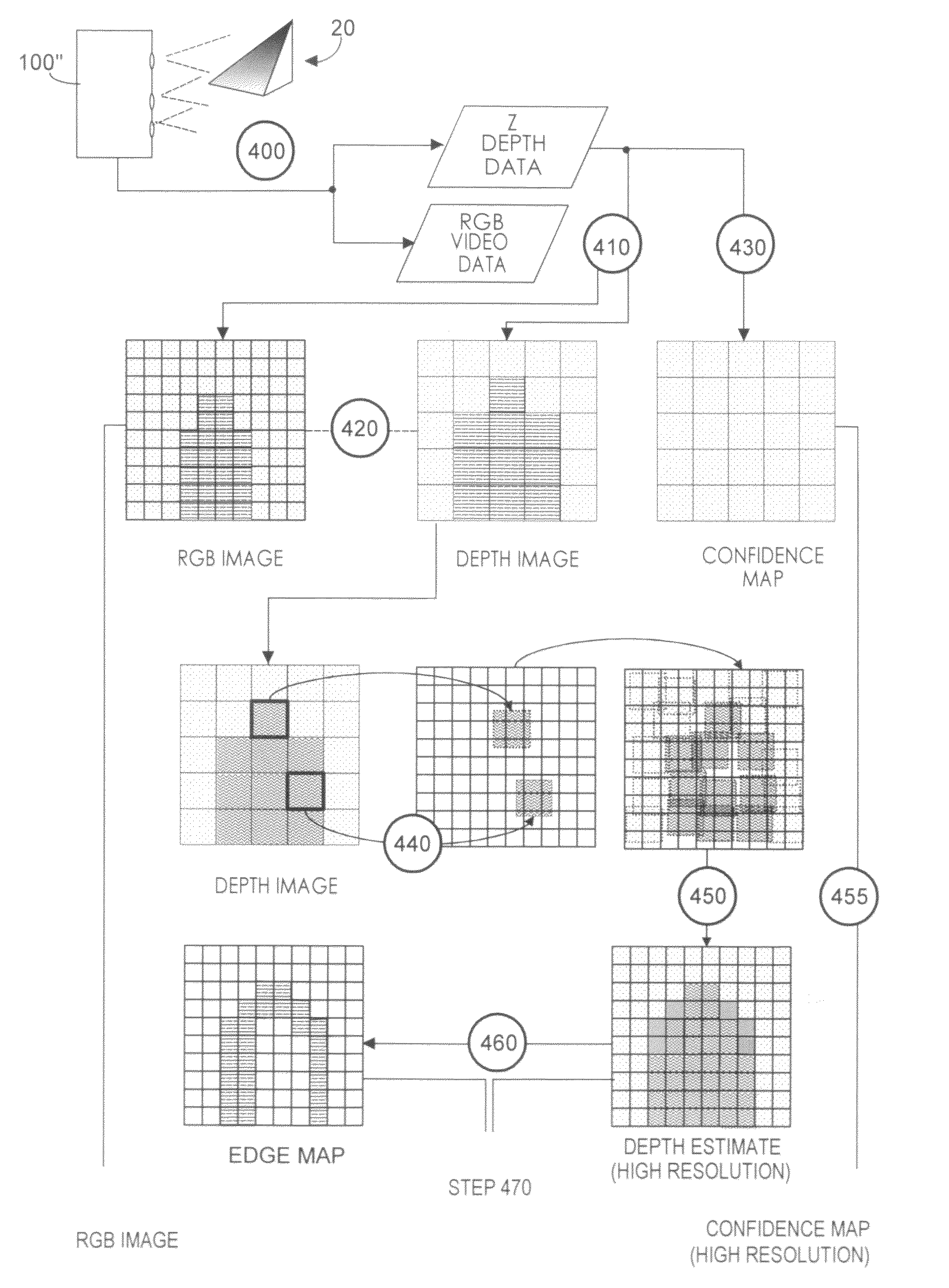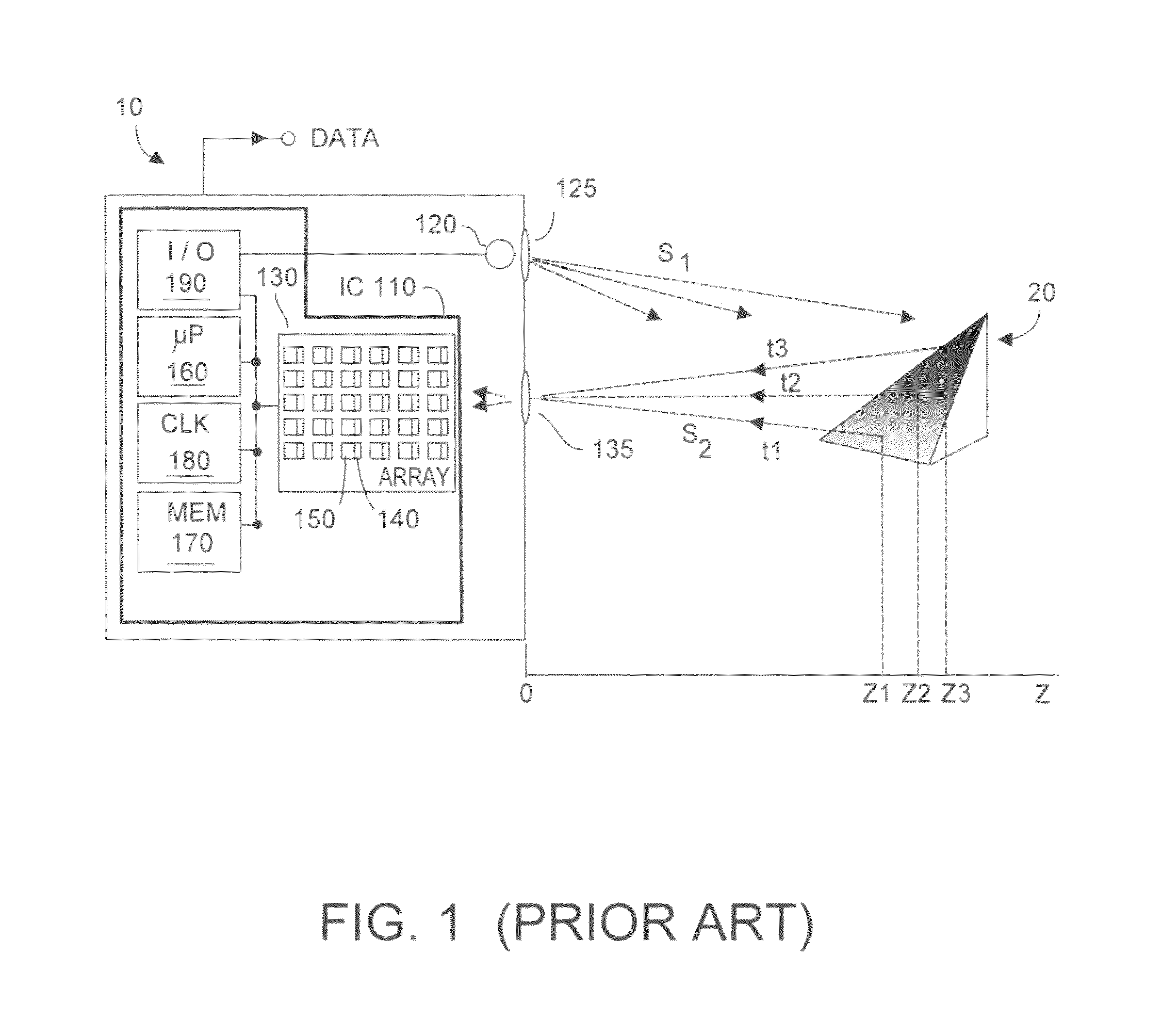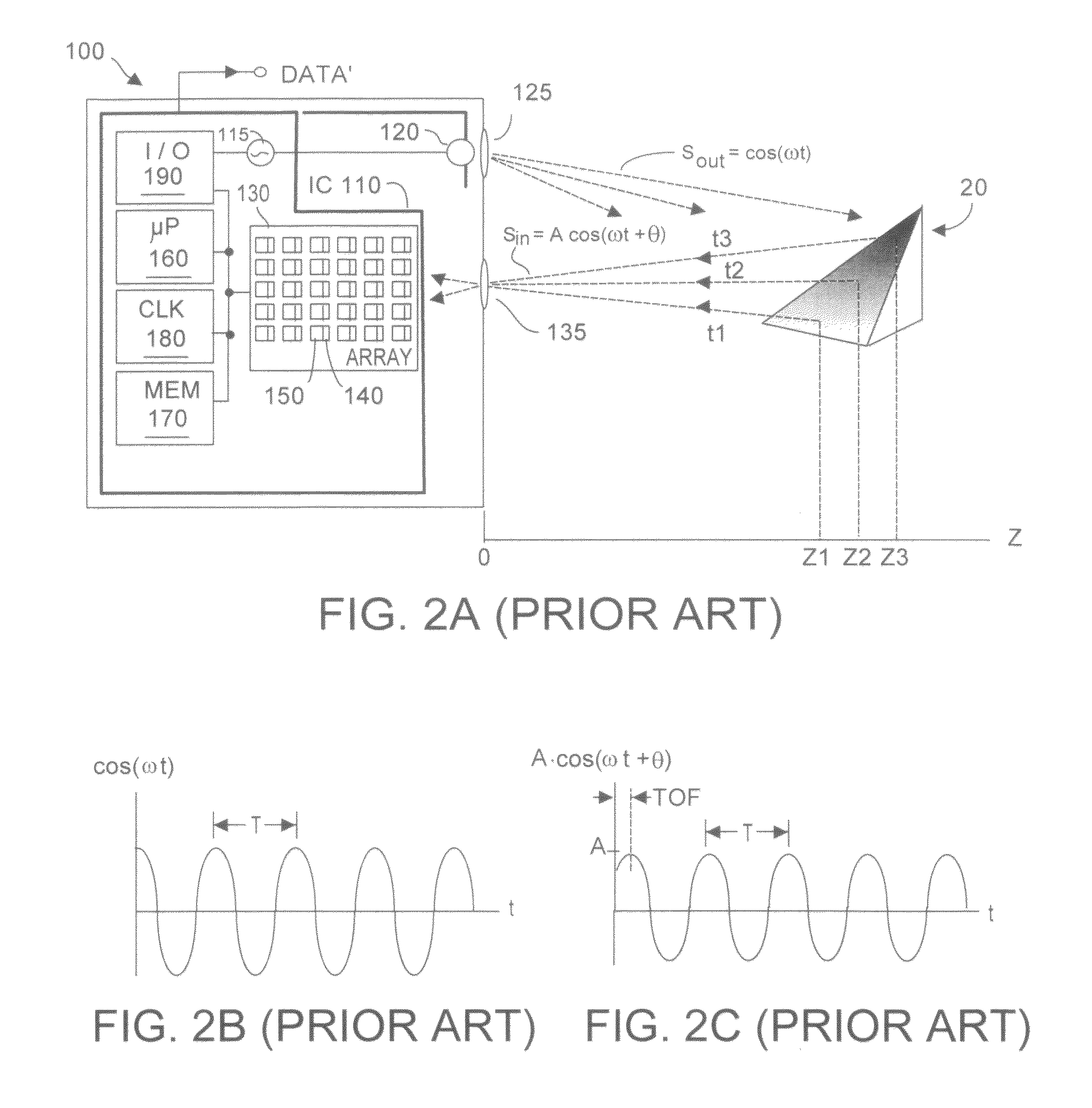Video manipulation of red, green, blue, distance (RGB-Z) data including segmentation, up-sampling, and background substitution techniques
a video manipulation and data technology, applied in the field of special effects manipulation of video, can solve the problems of unfavorable fringing, large staging facility, high cost, etc., and achieve the effect of improving z resolution, superior video processing techniques, and robust background substitution
- Summary
- Abstract
- Description
- Claims
- Application Information
AI Technical Summary
Benefits of technology
Problems solved by technology
Method used
Image
Examples
Embodiment Construction
[0048]Aspects of the present invention may be practiced with image acquisition systems that acquire only Z data, and / or RGB data. In embodiments where RGB and Z data are used, the system that acquires RGB data need not be part of the system that detects Z data. FIG. 5 depicts an omnibus RGB-Z system 100″ that combines TOF functionality with linear additive signal Z pixels as described with respect to FIG. 2A herein, with RGB and Z functionality as described with respect to FIG. 3A herein. In its broadest sense, RGB-Z system 100″ includes an array 130 of Z pixels 140, and includes an array 240′ of RGB pixels. It is understood that array 130 and array 240′ may be formed on separate substrates, or that a single substrate containing arrays of linear additive Z pixels and RGB pixels may be used. It is also noted that a separate lens 135′ may be used to focus incoming RGB optical energy. Memory 170 may be similar to that in FIG. 2A, and in the embodiment of FIG. 5, preferably stores a sof...
PUM
 Login to View More
Login to View More Abstract
Description
Claims
Application Information
 Login to View More
Login to View More - R&D
- Intellectual Property
- Life Sciences
- Materials
- Tech Scout
- Unparalleled Data Quality
- Higher Quality Content
- 60% Fewer Hallucinations
Browse by: Latest US Patents, China's latest patents, Technical Efficacy Thesaurus, Application Domain, Technology Topic, Popular Technical Reports.
© 2025 PatSnap. All rights reserved.Legal|Privacy policy|Modern Slavery Act Transparency Statement|Sitemap|About US| Contact US: help@patsnap.com



